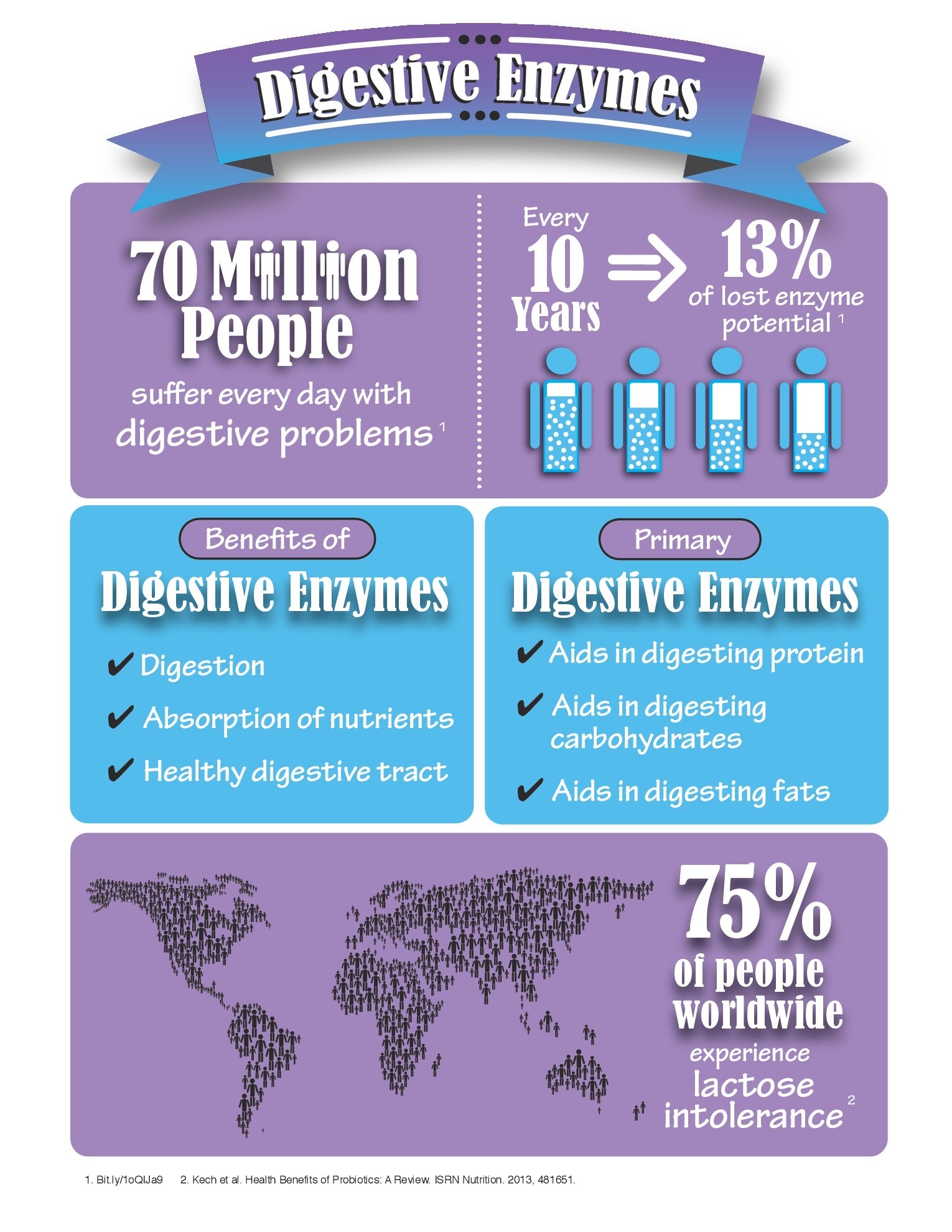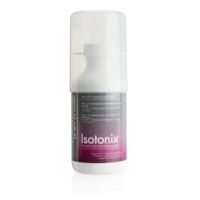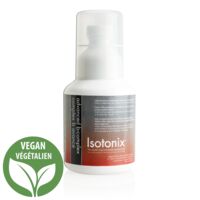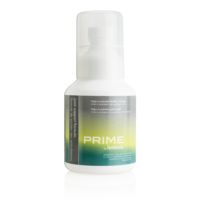Discover a new you with a healthy lifestyle change
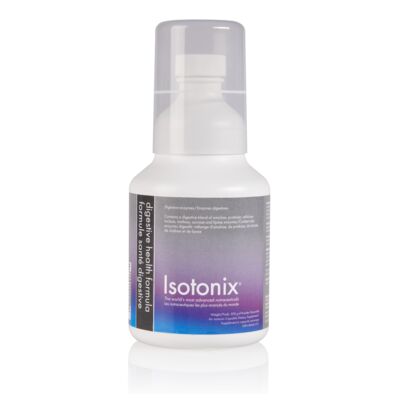
Isotonix® Digestive Health Formula
sku C13029
$54.62 CAD
$1.09 CAD Cashback
This product qualifies for free or reduced cost shipping. Learn More
Primary Benefits Isotonix® Digestive Health Formula
Includes Digezyme® - a powerful multi-enzyme blend.
- Contains a digestive blend of amylase, protease, cellulase, lactase, maltase, sucrase and lipase enzymes
- Superior Isotonix delivery system with fast absorption of nutrients
- No binders or fillers
- Great tasting!
What Makes Isotonix Digestive Health Formula Unique?
Isotonix Digestive Health Formula, an isotonic-capable food supplement, is a blend of amylase, protease, cellulase, lactase, maltase, sucrase and lipase enzymes. Enzymes are important for the body’s proper absorption and utilization of food. Over time, the body’s ability to make certain enzymes decreases as part of the natural aging process. Many scientists now believe that maintaining normal levels of key enzymes is important to maintaining overall health. Enzymes are responsible for every activity of life including proteases (aid in digesting protein), amylases (aid in digesting carbohydrates), and lipases (aid in digesting fats) which are digestive enzymes, which function as the biological catalyst to breaking down food.
Product Classifications
Gluten-Free - The finished product contains no detectable gluten (<10ppm gluten)
No Detectable GMOs - The finished product contains no detectable genetically-modified organisms
Vegan - The product is made without ingredients produced by or derived from animals
Isotonic-Capable Drinkable Supplements - Easy-to-swallow supplements in liquid form are immediately available to the body for absorption
Quality Standards - GMP Operations and Standardised Ingredients
Checked For: Heavy Metals, Microbiological Contaminants, Allergens, Potency, Purity and Identity
Isotonix Delivery System
Isotonix - the World's Most Advanced Nutraceuticals
Isotonic, which means “same pressure,” bears the same chemical resemblance of the body’s blood, plasma and tears. All fluids in the body have a certain concentration, referred to as osmotic pressure. The body’s common osmotic pressure, which is isotonic, allows a consistent maintenance of body tissues. In order for a substance to be absorbed and used in the body’s metabolism, it must be transported in an isotonic state. Isotonix dietary supplements are delivered in an isotonic solution. This means that the body has less work to do to in obtaining maximum absorption. The isotonic state of the suspension allows nutrients to pass directly into the small intestine and be rapidly absorbed into the bloodstream. With Isotonix products, little nutritive value is lost, making the absorption of nutrients highly efficient while delivering maximum results.
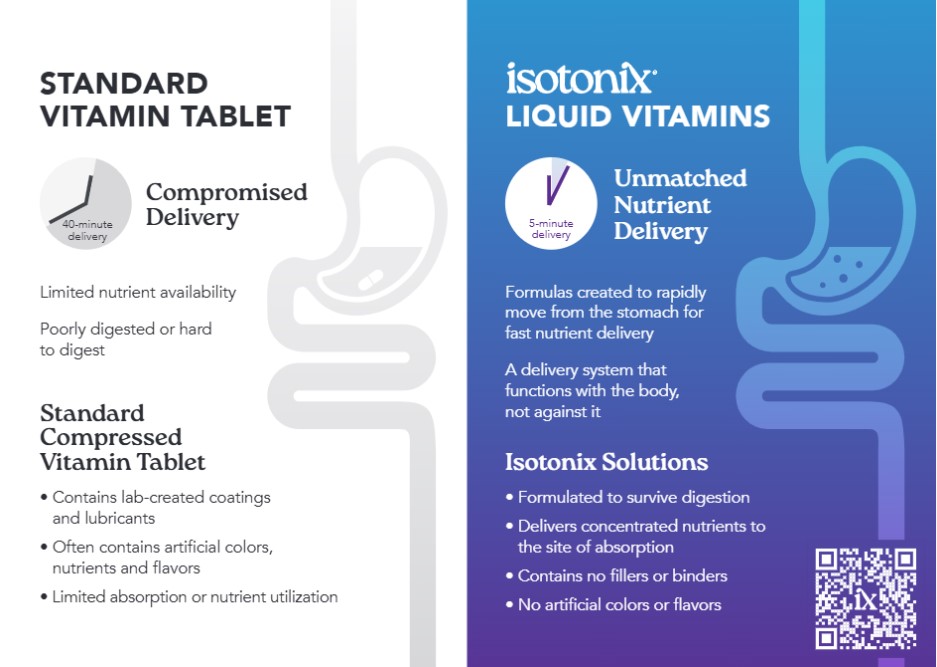
Key Ingredients
Amylase
Amylases are enzymes that break down carbohydrates so the body can more easily absorb them. This process is completed when amylase catalyzes the hydrolysis of alpha-1, 4-glycosidic linkages of polysaccharides to yield dextrins, oligosaccharides, maltose and D-glucose. Amylases are derived from animal, fungal and plant sources.
Protease
Proteases are enzymes that break peptide bonds between amino acids in proteins. Proteases occur naturally in all organisms and are involved in a multitude of physiological reactions from simple digestion of food proteins to highly complex functions (e.g., blood clotting).
Lactase
Lactase are enzymes are involved in the hydrolysis of lactose into the smaller sugars galactose and glucose. In humans, lactase is present in the small intestine. Lactase is essential for digestive hydrolysis of lactose in milk. Deficiency of the enzyme causes lactose intolerance; many people become lactose intolerant as adults.
Lipase
Lipase is an enzyme that aids in the digestion of lipid (fat) substrates. Pancreatic lipase (HPL) is a lipase acts to convert triglyceride substrates found in oils from food to monoglycerides and free fatty acids. Pancreatic lipases are found in the spaces outside of cells and have roles in the metabolism, absorption and transport of lipids throughout the body. Lipases are involved in diverse biological processes ranging from routine metabolism of dietary triglycerides to cell signaling and inflammation.
Cellulase
Cellulase is an enzyme which breaks down cellulose to beta-glucose. Humans do not produce cellulase in their bodies and are, therefore, unable to use most of the energy contained in plant material. Cellulase is a plant enzyme that aids in the digestion of fibrous substances. Cellulase is used as a digestive aid and for the management of flatulence. The activity of cellulase is expressed in cellulose units or CU.
Maltase
Maltase is an enzyme that aids in the digestion of the disaccharide maltose. Maltase works by separating the bonds in maltose to produce glucose.
Sucrase
Sucrase is the enzyme involved in the breakdown of sucrose to fructose and glucose.
FAQs
- What are digestive enzymes?
Digestive enzymes are special catalytic proteins that help our bodies break down food to utilize the complete spectrum of nutrients in the food we eat. Isotonix Digestive Health Formula acts to supplement and maximize the activity of the body’s own enzymes in an easy-to-take, pleasant-tasting drink. Isotonix Digestive Health Formula provides additional digestive enzymes for the body in order to maximize the absorption of nutrients from the food we eat. - How do enzymes function in the body?
Enzymes are the workhorses of our cells. They are proteins that catalyze many thousands of biochemical reactions in the body. While most enzymes work inside our cells, digestive enzymes operate outside the cells in the gastrointestinal tract. The start of digestion begins with digestive enzymes secreted by salivary gland cells into our mouths. Cells lining the gastrointestinal tract also contribute enzymes, such as pepsin in the stomach. In addition, digestive enzymes are produced in the pancreas and are emptied into the upper part of the small intestine. These enzymes help to break apart proteins, allowing the body to optimize its effort to digest proteins from plant and animal sources as well as break down starch, lactose, fats and nucleic acids (DNA and RNA). The result is a more complete digestive process, resulting in better nutritional absorption. Isotonix Digestive Health Formula supplies enzymes that are not inactivated by stomach acid. What this means is that the supplemental enzymes mix with and work in concert with the ingested food and begin to work with the body’s own digestive enzymes to release as many of the nutrients as possible. - How do we digest food?
Even before we eat, our body‘s digestive action begins to take place. Simply smelling food activates our salivary glands ("mouth watering"). As the food enters the stomach, the stomach acid and pepsin work together to begin breaking the food down into material the small intestine (where most nutrients are absorbed) can use. Enzymes specific to each of the three nutrient groups are released at this stage, further breaking down the food, and contributing to the digestive and absorption processes. These processes continue into the large intestine until the food’s nutritional content is extracted by the body. - What are the three basic enzymes and the four specialty food enzymes?
There are three basic food enzymes that help us digest our food. Each has a specific function and purpose, and each is necessary for the releasing of nutrients into our bodies. They are: protease (which digests proteins), amylase (which digests starch) and lipase (which digests fats). In addition to these basic enzymes, there are also some specialty enzymes including: lactase (for the sugar lactose in dairy products), maltase (for the sugar maltose in foods), sucrase (for table sugar and fruit), and cellulase (which helps us digest cellulose fibres). Each of these enzymes play a significant part in the body’s overall health by promoting better digestion of food and absorption of nutrients.
Science
- Afonso, C. L., E. R. Tulman, Z. Lu, E. Oma, G. F. Kutish, and D. L. Rock. 1999. The genome of Melanoplus sanguinipes entomopoxvirus. J Virol 73:533-52.
- Anthony H, Collins CE, Davidson G, et al. Pancreatic enzyme replacement therapy in cystic fibrosis: Australian guidelines. J Pediatr—Child Health. 1999; 35:125-129.
- Barrett A.J., Rawlings ND, Woessner JF. The Handbook of Proteolytic Enzymes, 2nd ed. Academic Press, 2003. ISBN 0120796104.
- Billigmann P. [Enzyme therapy—an alternative in treatment of herpes zoster. A controlled study of 192 patients]. [Article in German]. Fortschr Med. 1995; 113:43-48.
- Bock U, Kolac C, Borchard G, et al. Transport of proteolytic enzymes across Caco-2 cell monolayers. Pharm Res. 1998; 15:1393-1400.
- Brady, L., A. M. Brzozowski, Z. S. Derewenda, E. Dodson, G. Dodson, S. Tolley, J. P. Turkenburg, L. Christiansen, B. Huge-Jensen, L. Norskov, and et al. 1990. A serine protease triad forms the catalytic centre of a triacylglycerol lipase. Nature 343:767-70.
- Carriere, F., C. Withers-Martinez, H. van Tilbeurgh, A. Roussel, C. Cambillau, and R. Verger. 1998. Structural basis for the substrate selectivity of pancreatic lipases and some related proteins. Biochim Biophys Acta 1376:417-32.
- Chapin III, F.S., P.A. Matson, H.A. Mooney. Principles of Terrestrial Ecosystem Ecology. Springer-Verlag New York, NY. 2002
- Coenen TMM, Bertens AMC, De Hoog SCM, Verspeek-Rip CM. Safety evaluation of a lactase enzyme preparation derived from Kluyveromyces lactis. Food Chem Toxicol. 2000; 38:671-677.
- de Smet PA, Pegt GW, Meyboom RH. [Acute circulatory shock following administration of the non-regular enzyme preparation Wobe-Mugos]. [Article in Dutch]. Ned Tijdschr Geneeskd. 1991; 135:2341-2344.
- Diaz, B. L., and J. P. Arm. 2003. Phospholipase A(2). Prostaglandins Leukot Essent Fatty Acids 69:87-97.
- Dominguez-Munoz JE, Birckelbach U, Glassbrenner B, et al. Effect of oral pancreatic enzyme administration on digestive function in healthy subjects: comparison between two enzyme preparations. Aliment Pharmacol Ther. 1997; 11:403-408.
- Eckert K, Grabowska E, Stange R, et al. Effects of oral bromelain administration on the impaired immunocytotoxicity of mononuclear cells from mammary tumor patients. Oncol Rep. 1999; 6:1191-1199.
- Egmond, M. R., and C. J. van Bemmel. 1997. Impact of Structural Information on Understanding of Lipolytic Function, p. 119-129, Methods Enzymol vol. 284.
- Farkas G, Takacs T, Baradnay G, Szasz Z. [Effect of pancreatin replacement on pancreatic function in the postoperative period after pancreatic surgery]. [Article in Hungarian]. Orv Hetil. 1999; 140:2751-2754.
- Gilbert B, Rouis M, Griglio S, de Lumley L, Laplaud P. 2001. Lipoprotein lipase (LPL) deficiency: a new patient homozygote for the preponderant mutation Gly188Glu in the human LPL gene and review of reported mutations: 75 % are clustered in exons 5 and 6. Ann Genet 44(1):25-32.
- Girod, A., C. E. Wobus, Z. Zadori, M. Ried, K. Leike, P. Tijssen, J. A. Kleinschmidt, and M. Hallek. 2002. The VP1 capsid protein of adeno-associated virus type 2 is carrying a phospholipase A2 domain required for virus infectivity. J Gen Virol 83:973-8.
- Goni FM, Alonso A. 2002 Sphingomyelinases: enzymology and membrane activity. FEBS Lett. 531(1):38-46.
- Greenberger NJ. Enzymatic therapy in patients with chronic pancreatitis. Gastrenterol Clin North Am. 1999; 28:687-693.
- Hedstrom L. Serine Protease Mechanism and Specificity. Chem Rev 2002;102:4501-4523.
- Heikinheimo, P., A. Goldman, C. Jeffries, and D. L. Ollis. 1999. Of barn owls and bankers: a lush variety of alpha/beta hydrolases. Structure Fold Des 7:R141-6.
- Hooper NM. Proteases in Biology and Medicine. London: Portland Press, 2002. ISBN 1855781476.
- Identification of a variant associated with adult-type hypolactasia. Nat Genet 2002;30: 233-7. Free text. PMID 11788828.
- Kaul R, Mishra BK, Sutrador P, et al. The role of Wobe-Mugos in reducing acute sequelae of radiation in head and neck cancers—a clinical phase-III randomized trial. Indian J Cancer. 1999; 36:141-148.
- Kiessling WR. [Anaphylactic reaction in enzyme therapy of multiple sclerosis]. [Article in German]. Fortschr Neurol Psychiatr. 1987; 55:385-386.
- Klein G, Kullich W. [Reducing pain by oral enzyme therapy in rheumatic diseases]. [Article in German]. Wien Med Wochenschr. 1999; 149:577-580.
- Lowe, M. E. 1992. The catalytic site residues and interfacial binding of human pancreatic lipase. J Biol Chem 267:17069-73.
- Olds LC, Sibley E. Lactase persistence DNA variant enhances lactase promoter activity in vitro: functional role as a cis regulatory element. Hum Mol Genet 2003 Sep 15; 12(18): 2333-40. Free text. PMID 12915462.
- Puente XS, Lopez-Otin C. A Genomic Analysis of Rat Proteases and Protease Inhibitors. Genome Biol 2004;14:609-622.
- Puente XS, Sanchez LM, Overall CM, Lopez-Otin C. Human and Mouse Proteases: a Comparative Genomic Approach. Nat Rev Genet 2003;4:544-558.
- Retrieved from " http://www.lactospore.com/intro.htm"
- Retrieved from "http://en.wikipedia.org/wiki/Lactase"
- Retrieved from "http://en.wikipedia.org/wiki/Lipase"
- Retrieved from "http://en.wikipedia.org/wiki/Sucrase"
- Ross J, Jiang H, Kanost MR, Wang Y. Serine proteases and their homologs in the Drosophila melanogaster genome: an initial analysis of sequence conservation and phylogenetic relationships. Gene 2003;304:117-31.
- Rowan AD, Buttle DJ, Barrett AJ. The cysteine proteinases of the pineapple plant. Biochem J. 1990; 266:869-875.
- Schrag, J. D., and M. Cygler. 1997. Lipases and alpha/beta hydrolase fold. Methods Enzymol 284:85-107.
- Seyis I, Aksoz N. Production of lactase by Trichoderma sp.. Food Technol Biotechnol 2004;42:121–124. Free text.
- Solomon, Eldra P.; Berg, Linda R.; & Martin, Diana W. (2002). Biology (6th ed). Tho
- Spiegel, S., D. Foster, and R. Kolesnick. 1996. Signal transduction through lipid second messengers. Curr Opin Cell Biol 8:159-67.
- Stauder G, Ransberger K, Streichhan P, et al. The use of hydrolytic enzymes as adjuvant therapy in AIDS/ARC/LAS patients. Biomed Pharmacother. 1988; 42:31-34.
- Steffen C, Menzel J. [Enzyme breakdown of immune complexes]. [Article in German]. Z Rheumatol. 1983; 42:249-255.
- Steffen C, Smolen J, Miehlke K, et al. [Enzyme therapy in comparison with immune complex determinations in chronic polyarthritis]. [Article in German]. Z Rheumatol. 1985; 44:51-56.
- Svendsen, A. 2000. Lipase protein engineering. Biochim Biophys Acta 1543:223-238.
- The Merck Manual of Diagnosis and Therapy, Chapter 24
- Tjoelker, L. W., C. Eberhardt, J. Unger, H. L. Trong, G. A. Zimmerman, T. M. McIntyre, D. M. Stafforini, S. M. Prescott, and P. W. Gray. 1995. Plasma platelet-activating factor acetylhydrolase is a secreted phospholipase A2 with a catalytic triad. J Biol Chem 270:25481-7.
- Wald M, Olejár T, Pouková P, Zadinova M. Proteinases reduce metastatic dissemination and increase survival time in C57B16 mice with the Lewis lung carcinoma. Life Sciences. 1998; 63:PL237-243.
- Wald M, Závadová E, Pouková P, et al. Polyenzyme preparation Wobe-Mugos inhibits growth of solid tumors and development of experimental metastases in mice. Life Sciences. 1998; 62:PL43-48.
- Winkler, F. K., A. D'Arcy, and W. Hunziker. 1990. Structure of human pancreatic lipase. Nature 343:771-4.
- Withers-Martinez, C., F. Carriere, R. Verger, D. Bourgeois, and C. Cambillau. 1996. A pancreatic lipase with a phospholipase A1 activity: crystal structure of a chimeric pancreatic lipase-related protein 2 from guinea pig. Structure 4:1363-74.
- Wolf M, Ransberger K. [Effect of proteolytic enzymes on the reciprocal growth modification of normal and tumor tissues]. [Article in German]. Arch Geschwultstforsch. 1968; 31:317-331.
Reviews
Displaying 1 - 5 of 60
12/14/2024
by Anonymous
My favourite enzyme
Taste great! With this small packaging, make so much for convenient for me to carry out with me daily.
Response from Customer Service
12/15/2024
Dear Valued Customer,
Thank you for taking the time to leave your thoughts on the Isotonix™ Digestive Enzymes Plus Powder. We're glad to hear that you find the packaging convenient for on-the-go use. It's fantastic that the product suits your daily needs.
Thank you.
UnFranchise Services Team
09/30/2023
by Anonymous
Digestive Enzymes
easy to drink and nice taste. not like tablet must swallow.
09/12/2023
by JulianeC
Isotonix Digestive
Can't live without this product. I use it 95% of time.
Response from Customer Service
09/12/2023
Dear Valued Customer,
Thank you so much for your kind words about the Isotonix Digestive Health Formula! We're so delighted it has been so useful to you. We endeavor to create products that help to make life a bit simpler and it appears like this one does precisely that.
Thank you again!
The Product Information Team
06/25/2023
by SIEW KINT
Great after heavy meal!
I will take this digestive enzyme after a heavy meal and I find that it aids better digestion and I don't feel my stomach is bloated.
Response from Customer Service
06/25/2023
Dear Valued Customer,
Thank you for taking the time to leave your thoughts on the Isotonix™ Digestive Enzymes Plus Powder. We are happy to hear you are pleased with the product.
Thank you.
UnFranchise Services Department
05/10/2023
by KEAT GEORKC
best drink with cold water
I love this enzyme so much, especially when i take outside food, it helps me to decrease my bloating problem.
Response from Customer Service
05/12/2023
Dear Valued Customer,
Thank you for taking the time to leave your thoughts on the Isotonix™ Digestive Enzymes Plus Powder. We are happy to hear you are pleased with the product.
Thank you.
UnFranchise Services Department
- Prev
- Next

